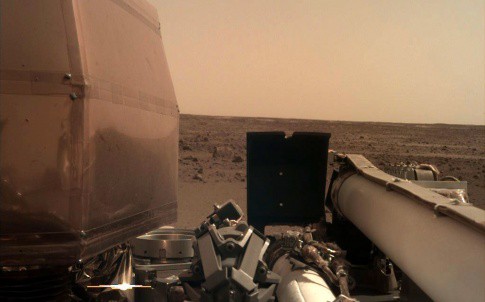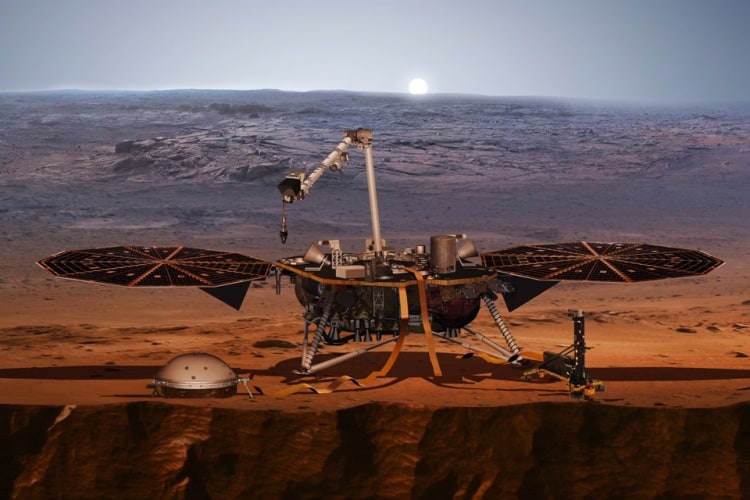
Having launched from Vandenberg Air Force Base in California in early May, the lander touched down on Mars on Monday, November 26, with a signal relayed back to Earth confirming the landing at around 2000 GMT. Another signal at around 0130 GMT indicated that the lander’s solar array had been successfully deployed.
InSight’s landing zone is a flat area of cooled lava near the Martian equator called Elysium Planitia. The robot’s two-year mission will see it drill down into the surface of the red planet to investigate how rocky planets – including Earth - and moons are formed. InSight carries three instruments designed and built in the UK as part of its seismic package. These microseismometer sensors were developed by Imperial College London and integrated with electronics built by the University of Oxford. Over the course of the two-year mission, scientists expect to detect anywhere between a dozen and a hundred tremors up to 6.0 on the Richter scale using this equipment.
“The UK scientists and engineers involved in this mission have committed several years of their lives to building the seismometer on board, and the descent is always a worrying time,” said Sue Horne, head of Space Exploration at the UK Space Agency. “We can now look forward to the deployment of the instrument and the data that will start to arrive in the new year, to improve our understanding of how the planet formed.”

Following its 458-million km journey, InSight had to reduce its speed dramatically as it entered the Martian atmosphere. As the average time it takes to communicate between Earth and Mars is around 12 minutes, the lander was required to perform an intricate sequence of pre-programmed manoeuvres as it geared up for touchdown.
"We hit the Martian atmosphere at 12,300mph (19,800 kilometres per hour), and the whole sequence to touching down on the surface took only six-and-a-half minutes," said InSight project manager Tom Hoffman at NASA’s Jet Propulsion Lab (JPL). "During that short span of time, InSight had to autonomously perform dozens of operations and do them flawlessly — and by all indications that is exactly what our spacecraft did."
The signal that confirmed the successful landing came via one of two experimental Mars Cube One (MarCO) CubeSats, which were part of the same launch payload as InSight. The MarCO twins are the first CubeSats to operate in deep space, relaying InSight’s entry, descent and landing (EDL) information back to Earth. While the lander’s mission was not dependent on the CubeSats, their successful deployment augurs well for the use of small satellites on future deep space missions.
"Every Mars landing is daunting, but now with InSight safely on the surface we get to do a unique kind of science on Mars," said JPL director Michael Watkins. "The experimental MarCO CubeSats have also opened a new door to smaller planetary spacecraft. The success of these two unique missions is a tribute to the hundreds of talented engineers and scientists who put their genius and labour into making this a great day."
https://www.youtube.com/watch?v=P_8ZEAPrrHQ
InSight's twin solar arrays are each 7' (2.2m) wide and provide 600W to 700W on a clear day, enough to power a household blender. Their design is based on the panels used by NASA's Phoenix Mars Lander, though InSight’s are slightly larger in order to provide more power output and to increase their structural strength. These changes were necessary to support the planned mission duration of 709 Martian sols (two earth years).
"The InSight team can rest a little easier tonight now that we know the spacecraft solar arrays are deployed and recharging the batteries," said project manager Hoffman. "It's been a long day for the team. But tomorrow begins an exciting new chapter for InSight: surface operations and the beginning of the instrument deployment phase."




April 1886: the Brunkebergs tunnel
First ever example of a ground source heat pump?